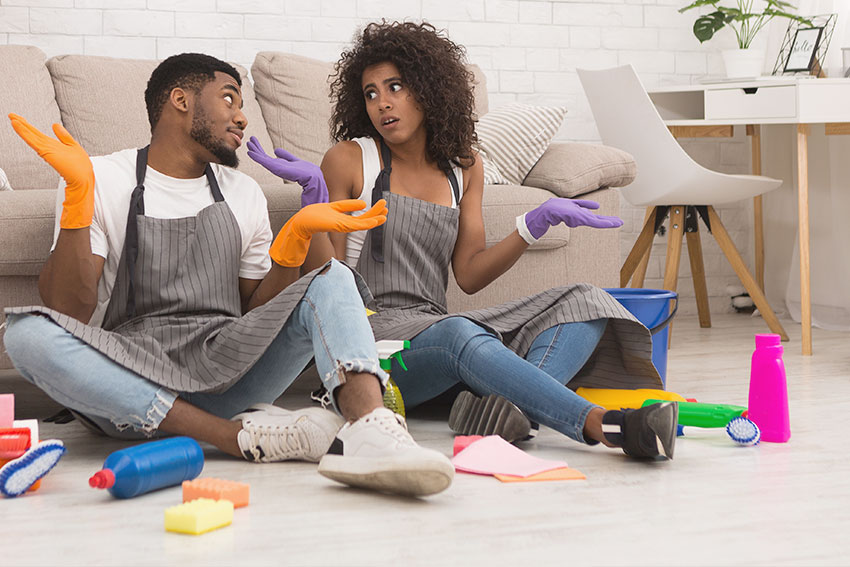Debunking Common Cleaning Myths
Everyone wants a clean home, but not all cleaning advice is worth following. Over time, myths about household cleaning have led many to use ineffective or even harmful techniques. Today, we’re setting the record straight with cleaning myths debunked and sharing effective cleaning tips that truly work.
Myth #1: Vinegar Cleans Everything
Vinegar is a natural cleaning powerhouse, but it’s not a one-size-fits-all solution. While it works well on glass, countertops, and some surfaces, it can damage natural stone like marble and granite due to its acidity. It’s also not effective at killing bacteria or viruses on high-touch surfaces.
Better Alternative: Use a disinfectant approved by the EPA for sanitizing high-contact areas, and stick to pH-neutral cleaners for stone surfaces. (Learn more from Good Housekeeping)
Myth #2: More Detergent Means Cleaner Laundry
It might seem logical that extra detergent will make your clothes cleaner, but the opposite is true. Excess detergent can leave residue on fabrics and inside your washing machine, leading to buildup and odors.
Best Cleaning Practice: Use the recommended amount of detergent based on your machine and load size. High-efficiency (HE) washers need even less detergent to function properly. (Check Consumer Reports for laundry tips)
Myth #3: Bleach is the Best Cleaner for Dirt and Stains
Bleach is excellent for disinfecting but isn’t designed to remove dirt and grime. In fact, using bleach on dirty surfaces can make cleaning more difficult because it doesn’t break down grease or organic matter.
Home Cleaning Hack: Clean surfaces with soap and water or an all-purpose cleaner first, then disinfect with diluted bleach if necessary. (Read more about bleach safety from the CDC)
Myth #4: Feather Dusters Remove Dust
Feather dusters often just move dust around instead of trapping it. This spreads allergens and dirt rather than getting rid of them.
Effective Cleaning Tip: Use a microfiber cloth or a damp dusting tool to capture and remove dust rather than just redistributing it. Microfiber cloths are particularly effective because they attract and trap particles rather than letting them float back into the air.
Myth #5: Air Fresheners Clean the Air
Spraying an air freshener might make a room smell nice, but it doesn’t clean the air. Many air fresheners contain chemicals that can contribute to indoor air pollution rather than improve air quality.
Best Cleaning Practice: Regularly open windows for ventilation and use air purifiers with HEPA filters to trap allergens and pollutants. Houseplants can also help improve indoor air quality by naturally filtering toxins.
Myth #6: Newspaper is the Best Way to Clean Windows
While newspapers were once a popular window-cleaning method, modern ink formulations can leave streaks or transfer onto glass.
Home Cleaning Hack: Use a microfiber cloth or a squeegee with a vinegar and water solution for streak-free windows.
Myth #7: Baking Soda and Vinegar Make a Powerful Cleaner
This DIY combo is often recommended, but the reaction between the two cancels out their effectiveness. When combined, they create carbon dioxide and water, which fizzes impressively but doesn’t offer much cleaning power.
Effective Cleaning Tip: Use baking soda for scrubbing and deodorizing and vinegar separately for cutting grease and dissolving mineral deposits.
Smarter Cleaning for a Healthier Home
Now that we’ve tackled these cleaning myths debunked, you’re better equipped to maintain a healthier, cleaner home. By following best cleaning practices and using effective cleaning tips, you’ll get better results with less effort. Keep these home cleaning hacks in mind, and you’ll avoid common mistakes that waste time and resources.
For professional cleaning services that ensure a truly spotless home, visit Kirkland House Cleaners today!
